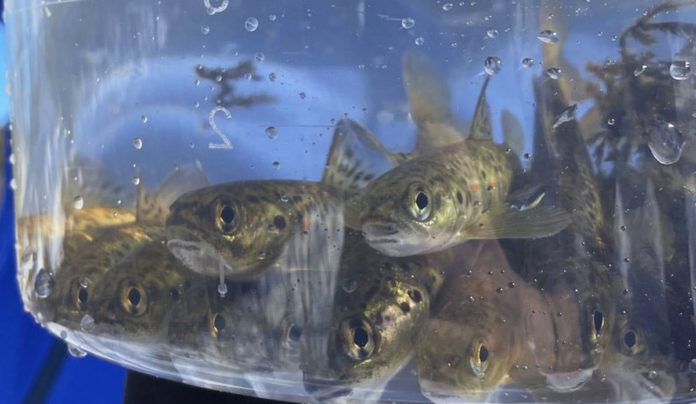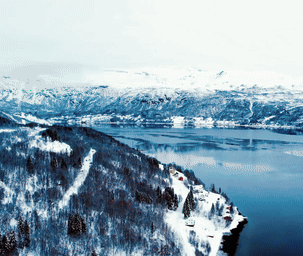Salmon smolts prefer direct route to open ocean, study finds.
A new study from Norway’s Institute of Marine Research (Havforskningsinstituttet) has revealed that young salmon smolts from Namsen predominantly swim directly westward towards the open ocean, avoiding areas with high concentrations of fish farms.
Using acoustic transmitters implanted in smolts and a network of 70-80 listening buoys spread across the Folda region, scientists tracked the migration of the fish as they transitioned from the Namsen River to the ocean. Most smolts chose the shortest path westward, bypassing the fish farm-dense waters to the north.
“Not surprisingly, mortality was highest in the area around the river mouth, almost half of the smolt disappeared before it had reached halfway out of the fjord,” said Rosa Maria Serra-Llinares, a marine scientist involved in the project. “The vast majority of fish registered with the buoys swam toward the open ocean upon exiting the fjord.”
Speed of Migration
The study, conducted over two years, also measured the speed of the smolts’ migration. In 2022, the fish took just under two days to exit the fjord, while in 2023, weaker water currents extended this journey to three days. Despite variations in individual travel times, the duration was within the normal range for the species.
High mortality rates were observed near the river mouth, where nearly half of the tagged smolts perished before reaching the midway point of the fjord. Predation and the transition to saltwater were identified as primary factors. Of the fish that made it halfway, 82% were recorded at the final checkpoint within the fjord.
The survival rates from fjord entry to the buoys in Folda were calculated at a minimum of 48% in 2022 and 33% in 2023, with researchers noting that these figures may be underestimates due to the limitations of the detection system.
Sea lice, a major threat to wild salmon populations, were not the focus of this study, but researchers emphasized that their findings could contribute to understanding the parasite’s impact.
“Even though the smolts avoid fish farms, they are still exposed to sea lice carried by ocean currents,” Serra-Llinares noted. The data collected will inform models to assess sea lice impacts on wild salmon populations in Norway.
The project was funded by the Norwegian Food Safety Authority (Mattilsynet).


